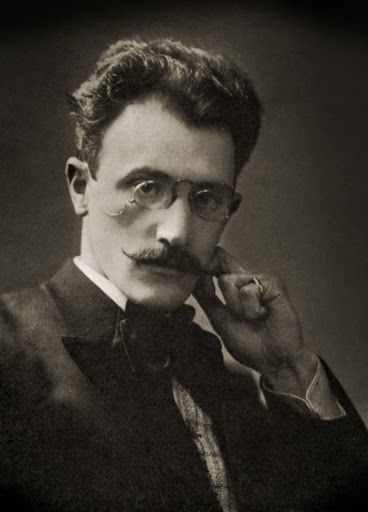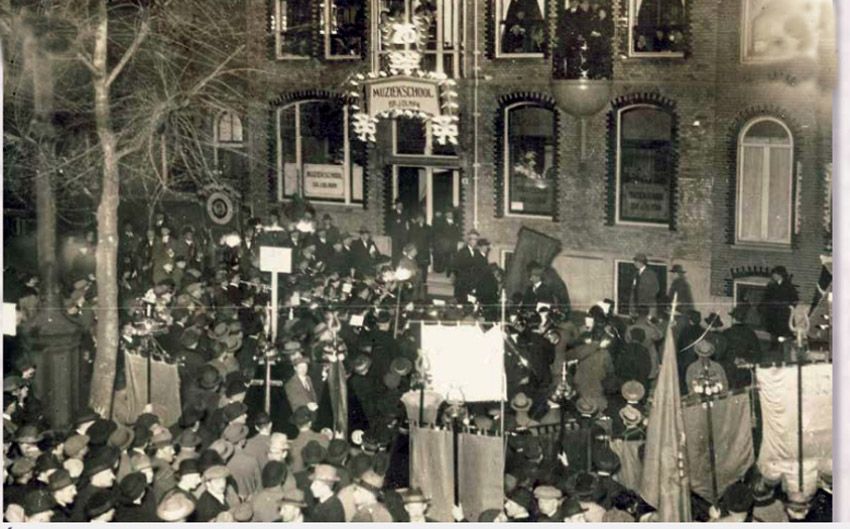Israel Olman
Israel Jacques Olman was born on 17 August 1883 in Amsterdam (Netherlands). At the age of 6 he began to learn the violin and from the age of 12 he attended lessons at the music school. His teachers were Bernard Zweers (music theory) and Fred Roeske (composition and choral singing). He also took private piano lessons with Evert Cornelis.
After school Israel Olman first played as a violinist in the Dutch opera orchestra, but the company went bankrupt and he continued as a choir master. A few years later he was the head of six different choirs and his first own composition - a work for choir - had been published. At the same time Israel Olman began to teach violin, piano and composition privately to earn a living. And his compositions received more and more success. In 1910 his first symphony was premiered by the Utrecht Symphony Orchestra. A year later his one-act opera Rina and his ballad Hannibal were premiered and got enthusiastic reviews. After World War I Israel Olman quit his choir activities bit by bit. He founded a music school and focused on his career as a composer. In 1919 Israel Olman met Antoon Krelage, secretary of the Dutch Union of Labour Choral Societies. Krelage encouraged Israel Olman to write music for these choirs. Israel Olman was also appointed jury member of the annual singing competition of the union and had to compose the compulsory pieces of the competition. For that reason Israel Olman composed in the following years mainly works that include men's choir and references to the labour movement. Israel Olman had huge success with these compositions and was one of the most esteemed choir composers in the Netherlands at that time. In 1924, at the height of his fame, a colossal homage concert was organised and took place in front of the music school of Israel Olman with hundreds of singers.
In 1926 Israel Olman quit - for unknown reasons - his successful work as a composer and teacher and started to work fulltime at BUMA, the Dutch collecting society for composers and music publishers. In the next years he completed two large orchestral compositions - the "Arbeids-Verrijzenis" in 1928 and a few years later the oratorio "Symphonie voor den Arbeid" - but in general his job left little spare time to compose. And so the bright star of Israel Olman was on the wane in the 1930s. To make things worse personal tragedies occured. In 1934 Israel Olman had a car accident which killed his father and injured him seriously. Three years later his wife died of a heart disease. The 1940s didn't improve for Israel Olman. During World War II and especially after the invasion of Nazi Germany in the Netherlands in 1940 he lived in fear of deportation. He got through these times unscathed, but after World War II the composer Israel Olman was outmoded. His oeuvre had such a strong emphasis on choir works with labour subjects, but both the choral societies as well as the labour movement were on the downfall. None of his compositions were performed anymore and in the last years of his life Israel Olman had money troubles. Israel Olman died on 8 May 1968 in Amsterdam (Netherlands).
Arbeids-Verrijzenis
In my possession is the autograph full score of the composition "Arbeids-Verrijzenis" (Labour resurrection). The work is subtitled "symphonic, symbolic choir work for soprano and baritone, mixed and men's choir and orchestra". The text was written by Margot Vos. The work was composed in 1927 and premiered on 11 February 1928 under the baton of Israel Olman himself in a concert of the Handwerkers Vriendenkring. While Israel Olman was still working on the composition in 1927, the German Labour Choral Society bought the rights for a performance in Germany. A translation of the text was done by Franz Lande and the performance took place at the first large German labour singing festival in June 1928 in Hannover.


homage concert in front of the Olman music school in 1924